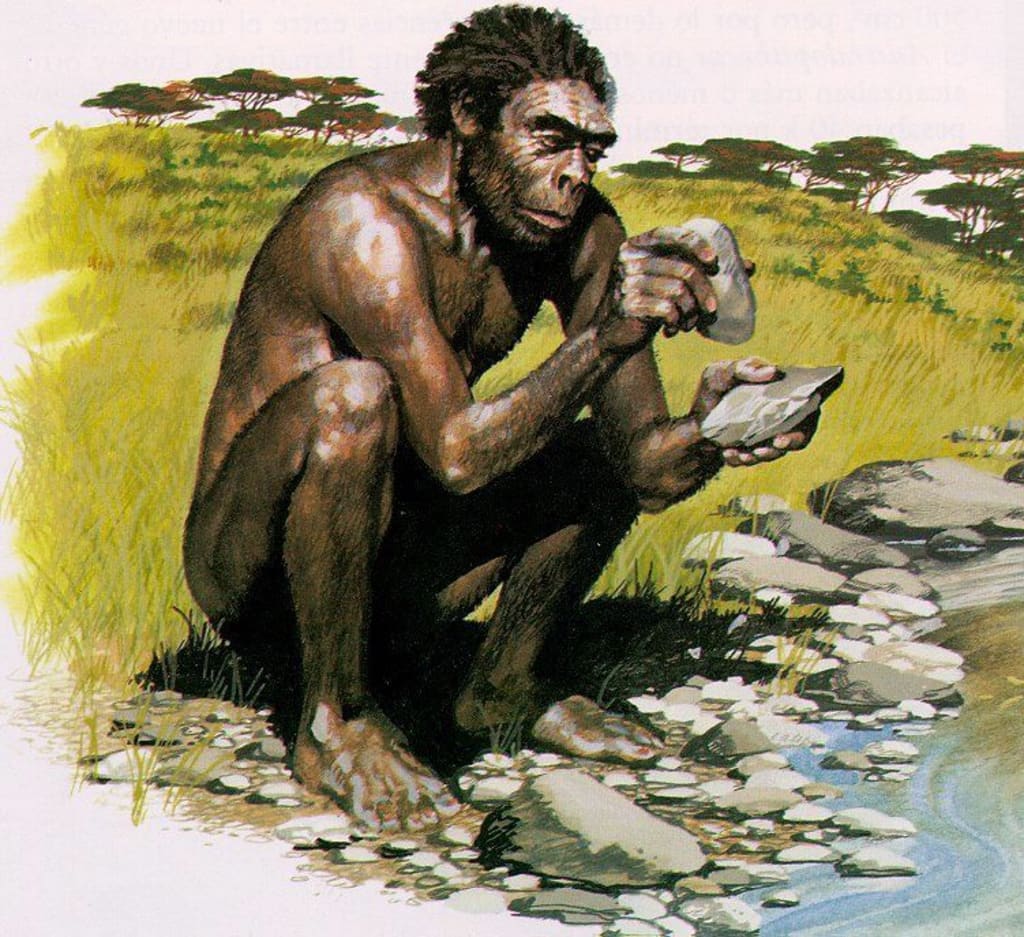
Homo habilis is an extinct hominid species that lived between 2.8 and 1.5 million years ago. It is considered to be one of the earliest members of the genus Homo, and its name means "handy man" in Latin, reflecting its ability to make and use tools.
The first fossils of H. habilis were discovered in the Olduvai Gorge in Tanzania in the 1960s by Louis and Mary Leakey. These fossils included a skull and several limb bones, and were dated to around 2.3 million years old. Other H. habilis fossils have since been found in East and South Africa, including in Kenya, Ethiopia, and South Africa.
H. habilis had a number of unique features that distinguished it from earlier hominids such as Australopithecus. It had a larger brain than Australopithecus, with an average cranial capacity of around 600 cubic centimeters, and its skull had a more rounded shape. It also had a more dexterous hand with longer fingers and a more opposable thumb, which allowed it to grasp and manipulate objects with greater precision.
One of the most significant discoveries associated with H. habilis is the Oldowan stone tool industry. These tools, which date back to around 2.6 million years ago, were the earliest known stone tools and were made by striking flakes off a core rock to produce a sharp edge. H. habilis is believed to have been the first hominid species to use these tools, which were likely used for a variety of tasks such as butchering animals and processing plant materials.
Despite its significant adaptations, H. habilis was still relatively small and slender compared to later hominids such as Homo erectus. It had a height of around 3 to 4 feet and weighed between 70 and 110 pounds. Its diet likely consisted of a combination of meat, gathered plant foods, and possibly scavenged or hunted foods.
The taxonomy of H. habilis has been a topic of debate among scientists. Some researchers have argued that H. habilis represents a distinct species from earlier hominids such as Australopithecus, while others have suggested that it should be classified as a sub-species of Australopithecus or even as a separate genus altogether.
Regardless of its classification, H. habilis is an important species in the study of human evolution. Its ability to make and use tools marks a significant milestone in human technological development, and its larger brain size suggests that it had more advanced cognitive abilities than its predecessors. The study of H. habilis and other early hominids provides valuable insights into the evolutionary processes that led to the emergence of modern humans.
It is not possible to determine the sexual orientation of Homo habilis, as there is no direct evidence or information available regarding their sexual behaviors or preferences. Sexual orientation is a complex aspect of human identity that involves attractions, emotions, and behaviors, and it is not necessarily correlated with biological sex or evolutionary history.
While we do not have direct evidence of the sexual behaviors or preferences of Homo habilis, we can make some inferences based on what is known about other primates and the social structures of early hominins. Like many primates, including their closest living relatives, chimpanzees and bonobos, early hominins such as Homo habilis likely lived in social groups and had complex social relationships. These relationships may have involved both cooperation and competition, as well as displays of dominance and submission.
Sexual behavior in primates is often linked to social dynamics, with individuals engaging in sexual behaviors to establish and maintain social bonds, compete for access to mates, and signal dominance or submission. Primates may also engage in same-sex sexual behavior, which can serve a variety of functions such as reducing social tension, establishing alliances, or providing pleasure.
While there is no direct evidence of same-sex sexual behavior in Homo habilis, some researchers have suggested that it may have been present based on what is known about the social structures and sexual behaviors of other primates. However, this remains a topic of debate and speculation, and it is difficult to draw firm conclusions without direct evidence.
Overall, while we cannot determine the sexual orientation of Homo habilis or any other extinct hominin species, we can infer some aspects of their social behaviors and relationships based on what is known about other primates and early hominins. However, it is important to approach these topics with caution and avoid making assumptions or generalizations that are not supported by the available evidence.
About the Creator
Kobra
"Enter the dark and twisted world of the unknown I lead you through the shadows on a journey into the depths of the unknown."
"Uncovering darkness"
Enjoyed the story? Support the Creator.
Subscribe for free to receive all their stories in your feed. You could also pledge your support or give them a one-off tip, letting them know you appreciate their work.






Comments
There are no comments for this story
Be the first to respond and start the conversation.